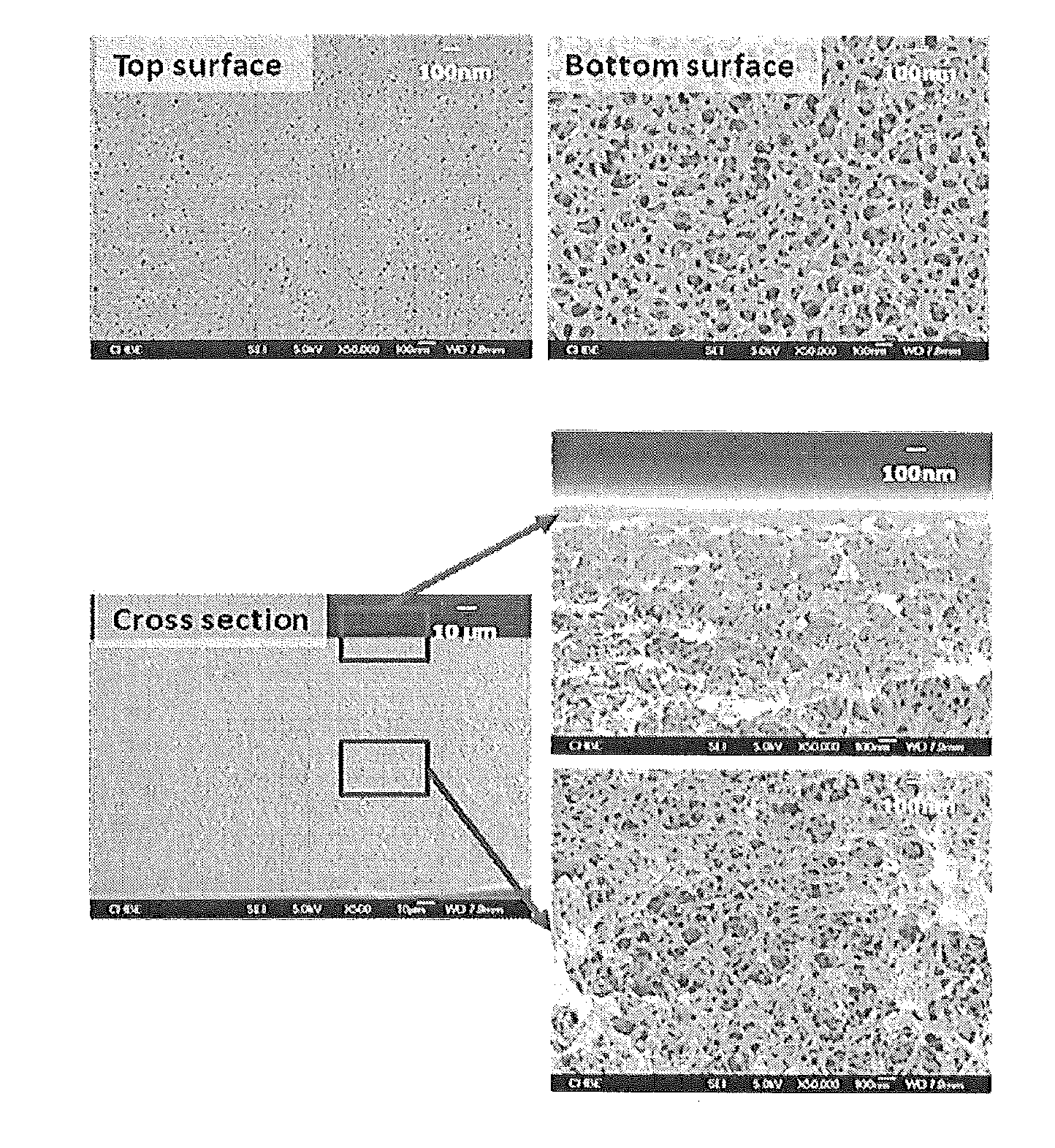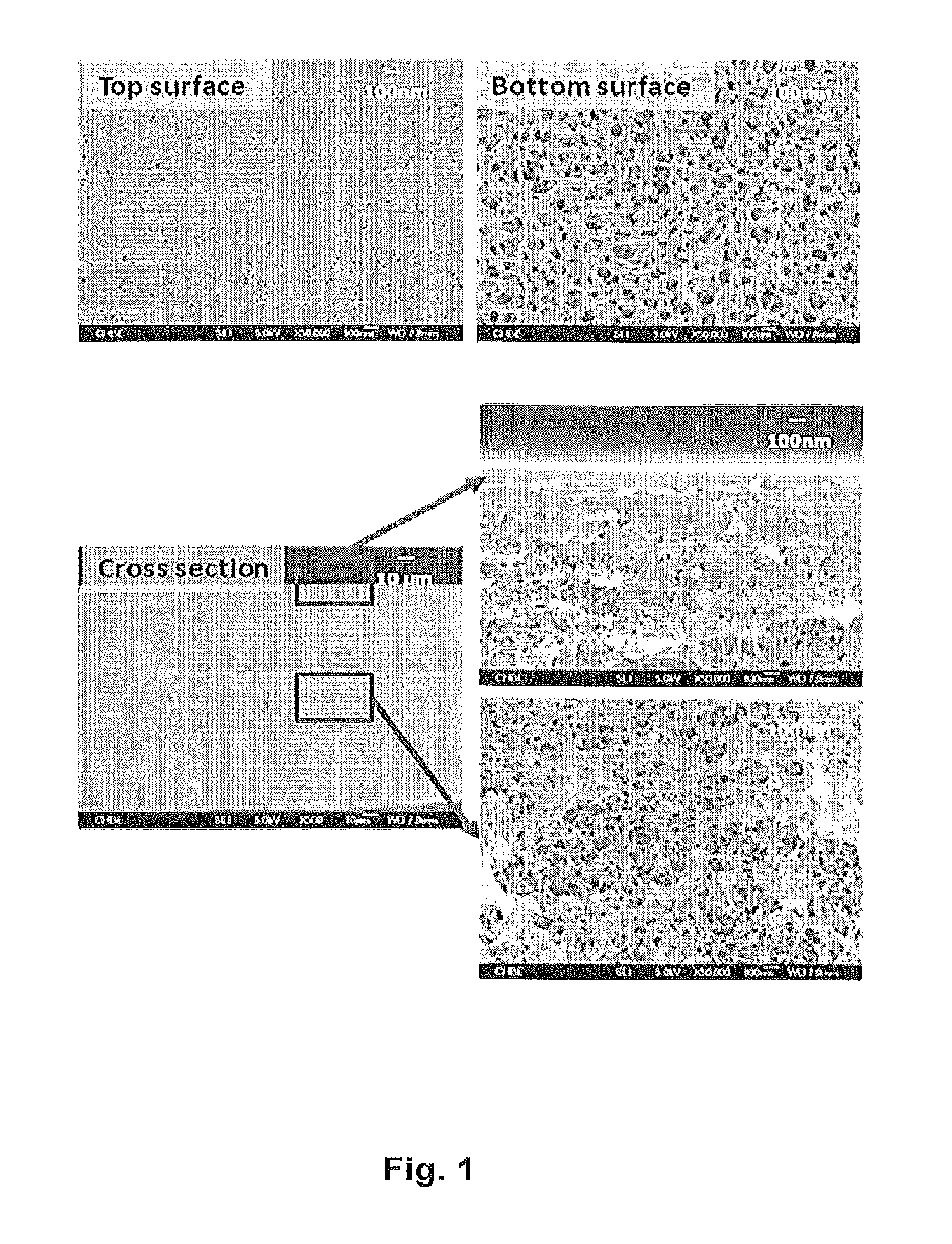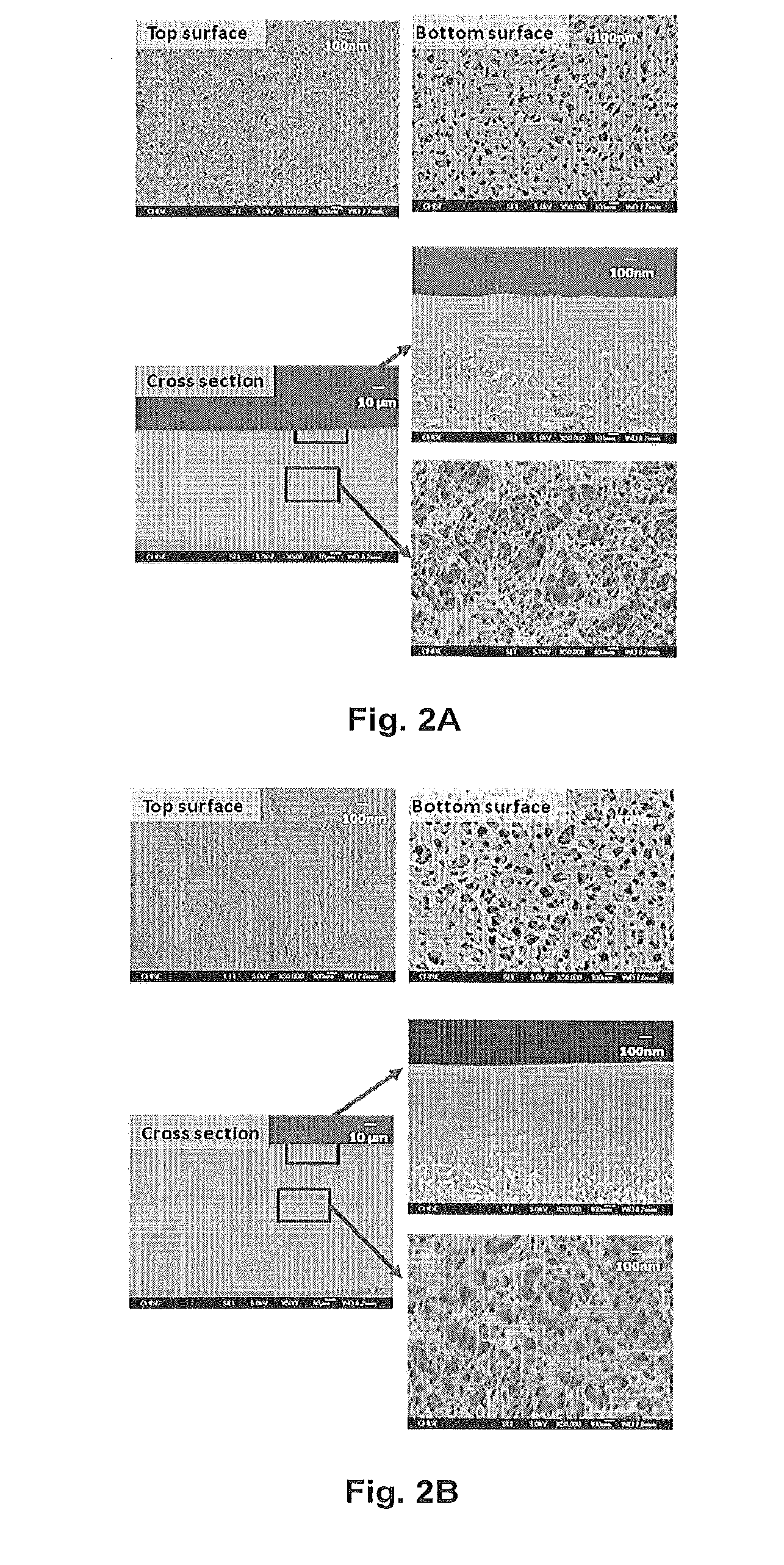High performance positively charged composite membranes and their use in nanofiltration processes
a composite membrane and positively charged technology, applied in the direction of membranes, separation processes, filtration separation, etc., can solve the problem that commercially available nf membranes are mostly negatively charged, and achieve the effect of balancing mechanical strength
- Summary
- Abstract
- Description
- Claims
- Application Information
AI Technical Summary
Benefits of technology
Problems solved by technology
Method used
Image
Examples
example 1
Preparation of Membrane Substrate Polymers
[0125]a) sPPSU 2.5%
[0126]In a 4 l HWS-vessel with stirrer, Dean-Stark-trap, nitrogen-inlet and temperature control, 1.99 mol Dichlorodiphenylsulfone (DCDPS), 2.00 mol 4,4′-Dihydroxybiphenyl (DHBP), 0.05 mol 3,3′-Di-sodiumdisulfate-4,4′-dichlorodiphenylsulfone und 2.12 mol Potassium carbonate (Particle size 36.2 μm) are suspended under nitrogen atmosphere in 2000 ml NMP. Under stirring the mixture is heated up to 190° C. 30 l / h nitrogen is purged through the mixture and the mixture is kept at 190° C. for 6 h. After that time 1000 ml NMP are added to cool down the mixture. Under nitrogen the mixture is allowed to cool down below 60° C. After filtration the mixture is precipitated in water which contains 100 ml 2 m HCl. The precipitated product is extracted with hot water (20 h at 85° C.) and dried at 120° C. for 24 h under reduced pressure.
[0127]Viscosity number: 88.7 ml / g (1 wt.- / vol % solution in N-methylpyrrolidone at 25° C.).
[0128]The cont...
example 2
Fabrication of the Macrovoid Free and Hydrophilic Membrane Substrate from sPPSU 2.5%
[0133]The sPPSU 2.5% polymer as prepared according to Example 1a) was first dried at 60° C. under vacuum overnight prior to use. A homogeneous dope solution with composition of sPPSU 2.5% / ethylene glycol / N-methyl pyrrolidone (NMP>99.5%) (20 / 16 / 64 wt %) was prepared for membrane substrate fabrications. The polymer solution was then cast on a glass plate using a 250 μm casting knife, followed by immediate immersion in a tap water coagulant bath at room temperature. The as-cast membranes were soaked in water for at least 2 days with constant change of water to ensure complete removal of solvent.
[0134]FIG. 1 shows the morphology of the NF membrane substrate. It can be observed from the cross-section that the membrane substrate exhibits a sponge-like structure with no macrovoids. The use of sulphonated material allows provision of macrovoid free structure due to delayed demixing. The top surface morpholo...
example 3
UV Grafting of Positively Charged Monomers on the Hydrophilic and Macrovoid Free Membrane Substrate
[0135][2-(methacryloyloxy)ethyl]trimethyl ammonium chloride (monomer A) and diallyldimethylammonium chloride (monomer B) were used as the modification agents. NF membranes fabricated using monomer A will be denoted as NF1 while that fabricated using monomer B will be denoted as NF2 hereinafter.
[0136]The sPPSU 2.5% supports were washed thoroughly in the deionised water before use. The substrates were gently blotted dry with filter paper and soaked in the monomer solutions for 15 minutes. Prior to this, the monomer solutions were purged with purified nitrogen. The purpose of purging with purified nitrogen was to remove oxygen in the monomer solution so that the UV reaction would only occur on the free radicals, not on the oxygen (i.e., unwanted side reaction). Subsequently, excess monomer solutions were blotted dry from the surface using filter paper. The substrate was sandwiched in betw...
PUM
| Property | Measurement | Unit |
|---|---|---|
| Thickness | aaaaa | aaaaa |
| Molar density | aaaaa | aaaaa |
| Nanoscale particle size | aaaaa | aaaaa |
Abstract
Description
Claims
Application Information
 Login to View More
Login to View More - R&D
- Intellectual Property
- Life Sciences
- Materials
- Tech Scout
- Unparalleled Data Quality
- Higher Quality Content
- 60% Fewer Hallucinations
Browse by: Latest US Patents, China's latest patents, Technical Efficacy Thesaurus, Application Domain, Technology Topic, Popular Technical Reports.
© 2025 PatSnap. All rights reserved.Legal|Privacy policy|Modern Slavery Act Transparency Statement|Sitemap|About US| Contact US: help@patsnap.com



